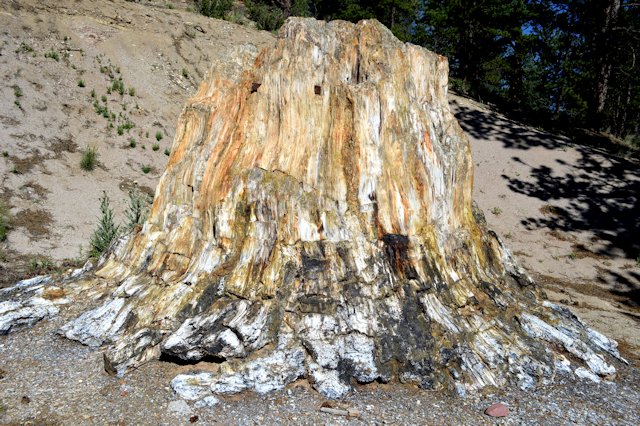The Florrisant Fossil Bed National Monument isn’t very well known, but it is very interesting.
Thirty-four million years ago this part of Colorado was a lake with a warm, temperate climate. There were many types of insects, birds, fish and mammals. This was also the home to a forest of giant redwoods, some estimated to be 500-750 years old and 250+ feet high.
But, there was a nearby volcano that erupted and spewed out ash and mud flow that buried the lake and 15 feet of the surrounding forest. The lake had a surface layer of a type of algae that, combined with the ash/mud flow, served to cement the insects, mammals, plants, birds etc. and eventually produced a huge assortment of fossils in the area. The stumps of the redwoods became petrified over time.
In the late 1800 settlers came into the area and started to find the fossils and stumps. Some of the settlers collected and preserved a wide array of fossils and turned them over to scientists who came out to see the area. But, other settlers opened their land to tourists who dug up lots of fossils and broke apart many of the stumps for souveniors.
In the 1930s area residents started petitioning the government to protect the area. But, it wasn’t until 1969 that the area became a national monument and the remaining fossils and stumps were protected.
Now the area is a grassy meadow and forested land with many trails that visitors can walk around the view the remaining petrified redwood stumps and a museum that displays many fossils and a history of the area.
Here are some pictures we took:

